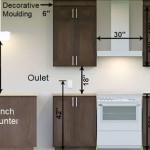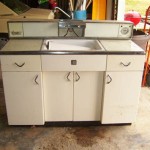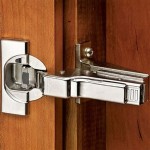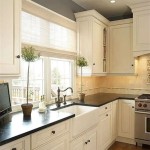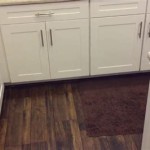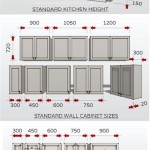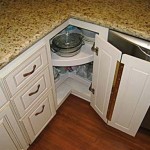How to Replace Kitchen Drawer Slides: A Comprehensive Guide
Kitchen drawers are ubiquitous in modern homes, providing essential storage for everything from cutlery and utensils to pots, pans, and food containers. Over time, the drawer slides, the mechanisms that allow drawers to open and close smoothly, can wear out, become damaged, or corroded. This can result in sticky drawers, drawers that stick, drawers that are hard to open or close, or drawers that completely malfunction. Replacing the drawer slides is a relatively straightforward DIY project that can significantly improve the functionality and convenience of your kitchen. This article provides a detailed guide on how to replace kitchen drawer slides, covering the necessary tools, steps, and considerations for a successful replacement.
Before embarking on this project, a crucial initial step is to identify the type of drawer slides currently in use. Several types exist, each with its own mounting style and characteristics. Understanding the existing slide type will inform the selection of replacement slides and ensure compatibility with the drawer and cabinet construction.
Common types of drawer slides include: side-mount slides, center-mount slides, and under-mount slides. Side-mount slides are the most prevalent type and are attached to the sides of the drawer box and the cabinet frame. Center-mount slides are mounted beneath the center of the drawer, requiring less space on the sides. Under-mount slides, typically found in high-end cabinetry, are installed beneath the drawer box and offer a concealed, cleaner aesthetic, as well as soft-close or self-close features.
Failing to accurately identify the existing slide type can lead to the purchase of incompatible replacement slides, resulting in significant delays and potential damage to the drawer or cabinet. Take careful notice of the mounting location, the overall configuration of the slide, and any visible markings or model numbers.
Key Point 1: Preparation and Assessment
The success of any DIY project hinges on thorough preparation. Replacing kitchen drawer slides is no exception. Before proceeding with the replacement, gather the necessary tools and materials. This includes:
*New drawer slides: Ensure the new slides are the same type and length as the existing slides. Measure the length of the existing slides carefully to ensure a proper fit. Measure the drawer box width to ensure the new slides will fit within the cabinet opening.
*Screwdriver (Phillips head and potentially flat head): A screwdriver is essential for removing and installing the screws that secure the drawer slides.
*Drill (with drill bits): A drill may be needed if the existing screw holes are stripped or if new holes need to be drilled.
*Measuring tape: Accurate measurements are crucial for proper alignment and installation of the new drawer slides.
*Pencil: A pencil is used for marking the locations of the new screw holes.
*Level: A level is essential for ensuring that the drawer slides are installed straight and level, preventing binding or misalignment.
*Safety glasses: Safety glasses protect the eyes from dust and debris during the removal and installation process.
*Work gloves: Work gloves provide a better grip and protect the hands from sharp edges and splinters.
Wood filler (optional): If the existing screw holes are stripped, wood filler can be used to repair them, creating a stronger hold for the new screws. *Clamps (optional): Clamps can be helpful for holding the drawer or cabinet frame in place while installing the new slides.
Once the tools are gathered, thoroughly assess the condition of the drawer box and the cabinet frame. Check for any damage, such as cracks, warping, or rot. If any significant damage is present, it may be necessary to repair or replace the affected components before installing the new drawer slides. Examine the existing screw holes for signs of stripping or wear. If the screw holes are stripped, they will need to be repaired using wood filler or by drilling new holes in a slightly different location.
Clear the work area around the cabinet and drawer. This will provide ample space to work and prevent accidents. Cover the surrounding surfaces with drop cloths or plastic sheeting to protect them from dust and debris.
Key Point 2: Removal of Old Drawer Slides
The removal of the old drawer slides is a critical step that requires careful attention to detail. Begin by fully extending the drawer and identifying the screws that secure the slides to the sides of the drawer box and the cabinet frame. Using a screwdriver, carefully remove these screws.
In some cases, the drawer slides may be attached using staples or other fasteners in addition to screws. If staples are present, use a staple remover or pliers to carefully remove them. Avoid damaging the surrounding wood during this process.
Once all the fasteners have been removed, gently detach the drawer slides from the drawer box and the cabinet frame. If the slides are stuck or difficult to remove, use a putty knife or flathead screwdriver to carefully pry them loose. Avoid using excessive force, as this can damage the drawer box or the cabinet frame.
After removing the old drawer slides, thoroughly clean the surfaces of the drawer box and the cabinet frame. Remove any debris, dirt, or adhesive residue that may be present. This will ensure a clean and smooth surface for the installation of the new drawer slides.
Inspect the screw holes for any damage or wear. If the screw holes are stripped, repair them using wood filler. Fill the stripped screw holes with wood filler and allow it to dry completely. Once the wood filler has dried, sand it smooth with fine-grit sandpaper.
Key Point 3: Installation of New Drawer Slides
With the old drawer slides removed and the surfaces prepared, the next step is to install the new drawer slides. Begin by separating the drawer slides into their two component parts: the drawer member (which attaches to the drawer box) and the cabinet member (which attaches to the cabinet frame). Most slides are designed to easily separate by a lever or button.
Position the drawer member of the new drawer slide on the side of the drawer box, aligning it with the location of the old drawer slide. Use a measuring tape and level to ensure that the new drawer slide is positioned correctly.
Using a pencil, mark the location of the screw holes on the drawer box. Pre-drill pilot holes at the marked locations. This will make it easier to install the screws and prevent the wood from splitting.
Secure the drawer member to the drawer box using the screws provided with the new drawer slides. Make sure the screws are tightened securely, but avoid over-tightening them, as this can strip the screw holes.
Repeat the process for the cabinet member of the drawer slide. Position the cabinet member on the inside of the cabinet frame, aligning it with the location of the old drawer slide. Use a measuring tape and level to ensure that the new drawer slide is positioned correctly.
Mark the location of the screw holes on the cabinet frame. Pre-drill pilot holes at the marked locations. Secure the cabinet member to the cabinet frame using the screws provided with the new drawer slides. Again, make sure the screws are tightened securely, but avoid over-tightening them.
Once both the drawer member and the cabinet member are installed, carefully slide the drawer into the cabinet. Ensure that the drawer slides smoothly and easily. If the drawer binds or sticks, recheck the alignment of the drawer slides and make any necessary adjustments.
Repeat the process for the remaining drawers. After installing the new drawer slides on all the drawers, test each drawer to ensure that it opens and closes smoothly and easily.
The height of the drawer slides is important. If the installed slides are not at the proper height, the drawer will bind or fail to close properly. Most slides have some adjustment to allow for slight variations. Check to see if your slides allow for vertical or horizontal adjustment and make adjustments as necessary. If the slides do not have adjustment mechanisms, then shims may be necessary to install underneath the slides to achieve the proper height.
Depending on the desired functionality, consider installing soft-close drawer slides. Soft-close slides prevent drawers from slamming shut, reducing noise and protecting the contents of the drawer. The installation process for soft-close slides is similar to that of standard drawer slides, but may require additional adjustments or hardware.
Properly installed drawer slides will significantly enhance the functionality and usability of kitchen cabinetry. Taking the time to carefully measure, align, and secure the new slides will ensure a smooth, reliable operation for years to come.

How To Replace Old Drawer Slides Only 5 Easy Steps Vadania Home Upgrader

Replacing Drawer Slides Extreme How To

How To Install Drawer Slides The Easy Way

How To Replace Old Drawer Slides Only 5 Easy Steps Vadania Home Upgrader

How To Replace Kitchen Drawers Shelfgenie

How To Fit Or Replace A Drawer Slide Runner

How To Replace Old Drawer Slides Only 5 Easy Steps Vadania Home Upgrader

How To Install Cabinet Drawers With Ball Bearing Slides Houseful Of Handmade

How To Install Cabinet Drawers With Ball Bearing Slides Houseful Of Handmade
:strip_icc()/102326027-c240150e2d95420a85bc45f473f98644.jpg?strip=all)
How To Install Soft Close Drawer Slides
Related Posts

